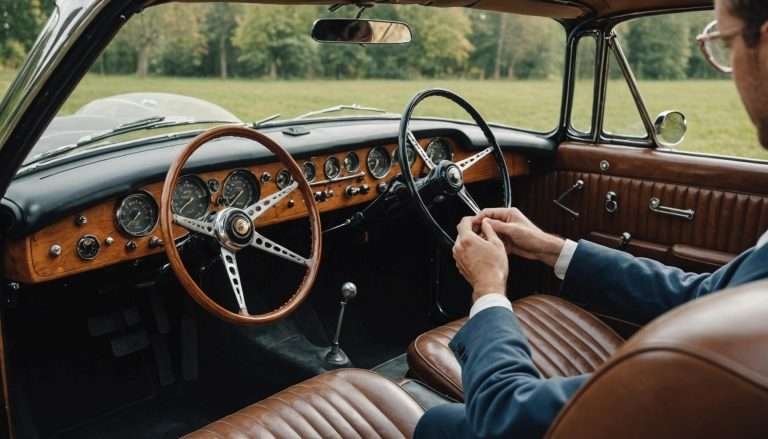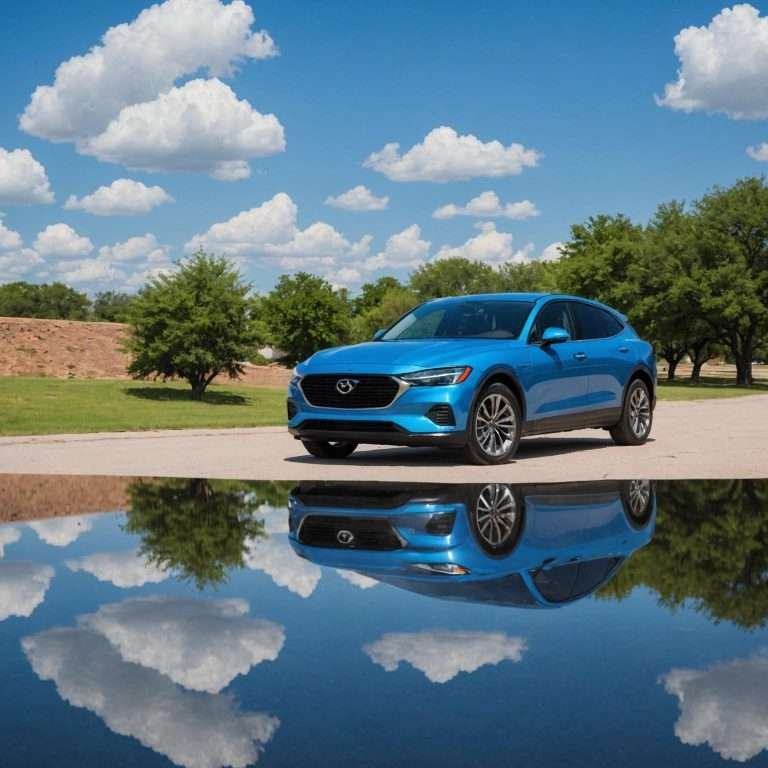Curious to know if hard water can damage your car’s paint? You’ve come to the right place! At Do It Right Ceramic Coating and Detailing, we understand the nuances of car maintenance, and we’re here to provide you with all the answers. Hard water, with its high mineral content, can indeed wreak havoc on your vehicle’s finish, leaving unsightly spots and deposits that are tough to remove.
In this article, we’ll unravel the mystery of hard water’s impact on your car’s paint, reveal the tell-tale signs of damage, and equip you with effective strategies to prevent it. We’ll also delve into the best washing practices, drying techniques, and essential products that can shield your beloved car from hard water’s persistent effects. Join us as we explore these insights and ensure your car maintains its pristine appearance!
What is Hard Water and How Does it Affect Car Paint?
Hard water is water that has a high mineral content, primarily calcium and magnesium. This type of water is quite common and can cause a variety of issues when it comes into contact with different surfaces, including your car’s paint.
When hard water dries on car paint, it often leaves behind a residue known as water spots. These spots can etch into the paint, leading to a dull appearance, and, over time, potentially damaging the clear coat—a protective layer meant to keep your car looking shiny and new.
The mineral deposits from hard water, if left untreated, can build up and become more difficult to remove. Over time, this can lead to more pronounced damage, making your car look older and less cared for. Additionally, these deposits can interact with other substances on the paint, accelerating corrosion or wear. To protect your vehicle, consider exploring ceramic coating options that offer enhanced protection against such damage.
Up next, we’ll explore the telltale signs that hard water has affected your car’s paint, helping you understand what to look out for and when to take action.
Signs of Hard Water Damage on Your Car’s Paint
Hard water can wreak HAVOC on your car’s paint, leaving it less than pristine. The minerals—mostly calcium and magnesium—left behind when hard water dries can wreak havoc over time. These deposits not only mar your car’s appearance but can also cause lasting damage if not addressed.
Here are some TELLTALE SIGNS to look out for:
- Water Spots: The most common sign. They appear as small, circular marks on the surface where water has evaporated.
- White Deposits: Mineral build-up can form a chalky residue that’s rough to the touch.
- Paint Etching: Over time, hard water minerals can penetrate the clear coat, leading to etching or surface roughness. For solutions to these issues, consider exploring paint correction services in Kennedale, TX.
- Streaks and Blotches: Irregular patterns left by water running off, which can embed into the paint if left unchecked.
- Decreased Gloss: A once-shiny finish may become dull and lackluster due to mineral deposits clouding the paint.
Spotting these signs early can help prevent extensive damage. Next, we’ll discuss washing techniques to safeguard your car against hard water effects.
How to Safely Wash Your Car to Prevent Hard Water Damage
Hard water can leave unsightly spots and potentially damage your car’s paint over time. Washing your car the right way can help prevent these issues. Here’s how to do it safely and effectively:
- Choose the Right Soap: Use a car shampoo specifically designed to minimize water spots. Regular household soaps and detergents can strip away protective wax and increase the risk of damage.
- Use Soft Water: If possible, wash your car with softened water to reduce mineral deposits. Alternatively, use distilled water for a final rinse to remove any residue.
- Wash in a Shady Spot: Avoid washing your car under direct sunlight as it causes water to evaporate quickly, leaving spots behind. Wash it in a shaded area or during cooler parts of the day.
- Rinse Thoroughly: Make sure to rinse all soap and grime off your car thoroughly. Any remaining contaminants can seep into the paint and create blemishes over time.
- Dry Immediately: Use a microfiber cloth to dry your car as soon as you’re finished rinsing. This helps prevent water spots from forming (more on drying practices later).
- Chemical Decontamination (Optional): Consider using a water spot remover or clay bar treatment to remove any stubborn mineral deposits that might remain after washing. For professional assistance, you can explore exterior detailing services in Arlington, TX.
Next, we’ll explore the best practices for drying your car after washing to further protect against hard water damage.
Best Practices for Drying Your Car After Washing
Drying your car properly is just as important as washing it. Leaving water to air dry can lead to unsightly water spots, which occur when minerals in the water (especially from hard water) are left behind. These can etch into the paint if not removed promptly. Here’s how to dry your car effectively to maintain its shine and prevent damage. For more tips on car care, visit this car detailing blog.
Use Soft, Clean Towels or Microfiber Cloths
The best way to dry your car is with a clean, soft towel or a microfiber cloth. These materials absorb water efficiently without scratching the paint. Using dirty or rough towels can lead to scratches or swirl marks.
Work in Sections
To prevent water from drying before you get to it, dry your car one section at a time. Start from the top and work your way down, moving systematically around the vehicle.
Blot, Don’t Wipe
Instead of dragging the towel across the surface—which could cause scratches—try blotting the water. Gently press the towel onto the wet surface to soak up the water.
Use a Leaf Blower or Car Dryer
For a touchless option, use a leaf blower or an automotive blower designed for cars. This method is excellent for removing water from hard-to-reach areas like mirrors, door handles, and trims without contact.
Avoid Direct Sunlight
If possible, dry your car in a shaded area or on a cloudy day. This prevents the sun from quickly evaporating water and leaving behind spots.
Check for Remaining Water
After the initial drying, inspect your vehicle for any remaining water, especially in crevices or on edges. Use a smaller microfiber cloth to absorb any leftover drops.
Remember, proper drying is key to protecting your car’s finish. It helps maintain your car’s appearance, ensuring your hard work during washing doesn’t go to waste.
Products That Protect Car Paint From Hard Water
Protecting your car’s paint from hard water isn’t just about how you wash it—it’s also about the products you use. Certain products are designed to minimize water-related damage and maintain your vehicle’s glossy appearance. By including these protective measures in your car care routine, you can prevent hard water spots and maintain a sleek finish. For a comprehensive approach, consider a full professional car detailing package that incorporates these products effectively.
Here’s a run-down of some of the best products to consider:
- Waterless Wash Solutions: Great for quick clean-ups without leaving water spots. They dissolve dirt and leave a protective film on the paint surface.
- Paint Sealants: Provide a long-lasting barrier against contaminants, including mineral deposits from hard water.
- Carnauba Wax: Offers both shine and protection against water spots by repelling water from the paint surface.
- Ceramic Coatings: Provide a hard-wearing protective layer that resists water spots, UV rays, and road grime.
- Quick Detailer Sprays: Ideal for spot-cleaning hard water marks between main washes, these sprays also boost paint protection.
- Water Spot Removers: Specifically formulated to dissolve mineral deposits and eliminate existing water spots efficiently.
- pH-Balanced Car Shampoo: Helps prevent the formation of water spots during washing by maintaining a balanced pH level.
These products, when used properly, can keep your car’s paint looking pristine, even when facing challenges from hard water. Up next, we’ll dive into best practices for drying your car after washing to further preserve your vehicle’s appearance.
Long-Term Prevention Tips for Maintaining Your Car’s Finish
Keeping your car’s finish looking pristine requires consistent care and attention. While washing and drying are important steps, long-term strategies enhance and protect your vehicle’s paint. Here are some essential tips to maintain that showroom shine:
Regular Waxing and Sealing
Apply wax or a paint sealant every few months. This helps create a protective barrier against UV rays, contaminants, and hard water stains (which are common culprits in paint damage). For a more durable solution, consider the benefits of ceramic coating versus traditional wax.
Park Smart
Whenever possible, park your car in a garage or under a shaded area to limit sun exposure. UV rays fade paint over time, so staying out of the sun as much as possible can preserve your car’s color.
Use a Car Cover
If indoor parking isn’t an option, using a car cover provides a layer of protection against environmental factors like dust, bird droppings, and acid rain.
Avoid Automated Car Washes
Some automated car washes use abrasive brushes that can scratch your car’s finish. Opt for hand-washing or touchless car washes to minimize potential damage.
Regularly Check for Contaminants
Sometimes, contaminants like sap, tar, or bug residue can settle on your car’s surface. Remove them promptly with a specialty cleaner to prevent them from eating into the clear coat and causing lasting damage.
By incorporating these practices into your routine, you’ll ensure your car’s finish remains lustrous and well-protected for years to come. Next, we’ll cover the best products to shield your paint from hard water and other common threats.
Conclusion
In summary, hard water can indeed lead to damage on your car’s paint over time, causing unsightly water spots and potential corrosion if left untreated. To protect your vehicle, implement effective prevention measures such as regular washing with soft water, using quality car wax, and seeking professional detailing services to apply a durable ceramic coating. These steps are essential to maintaining your car’s appeal and longevity.
At Do It Right Ceramic Coating And Detailing, we specialize in protecting your vehicle from the harmful effects of hard water exposure and other environmental factors. Our expert team offers a comprehensive range of detailing services, including ceramic coatings and paint correction, tailored to meet your specific needs. If you’re located in Kennedale, Arlington, Mansfield, or Fort Worth, trust us to enhance and preserve your car’s finish. Reach out to us at 817-818-0959 or email njpsaleen@gmail.com to schedule an appointment or for more information. We look forward to helping you keep your car looking its best!







